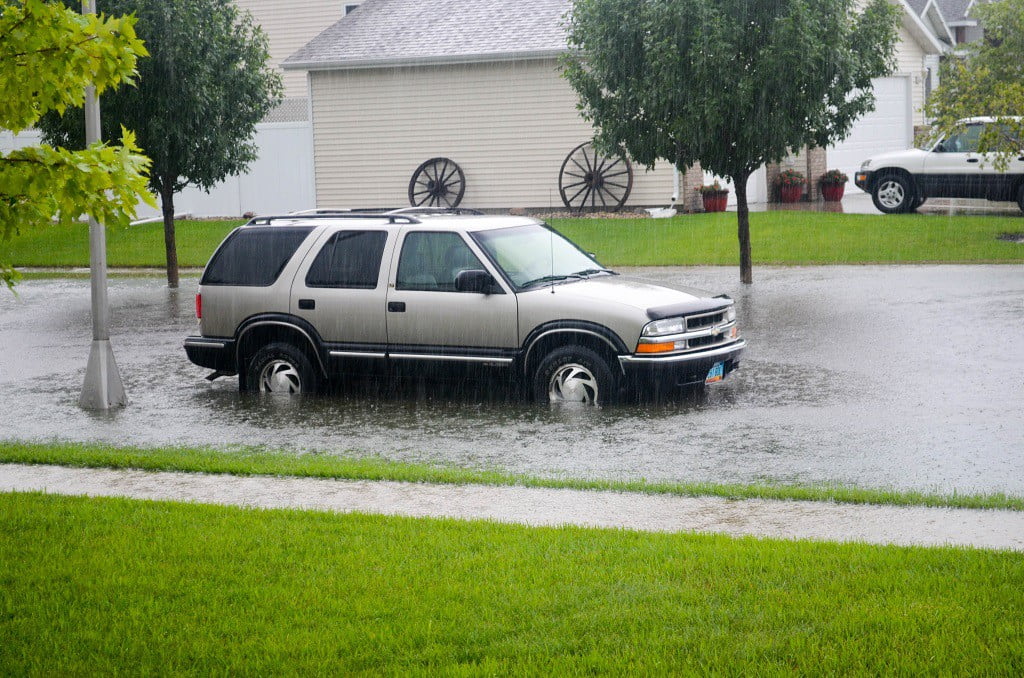Flooding causes more property damage in the U.S. than any other weather-related event. It is a threat to life and property that can occur anywhere. On average, there are 89 fatalities and $8.3 billion in damages annually.
This year, National Flood Safety Awareness Week will take place March 15-21. The purpose of Flood Safety Awareness Week, according to NOAA and FEMA, is to encourage you to know your risks, take action, and be an example for others where you live.
[hr_invisible]
Before a Flood
Sometimes floods develop slowly and forecasters can anticipate where a flood will happen days or weeks before it occurs. Oftentimes flash floods can occur within minutes and sometimes without any sign of rain. Being prepared can save your life and give you peace of mind.
- Create an emergency plan in advance for your family.
- Assemble an emergency survival kit with enough supplies for 3 days.
- Know your risk. Flood insurance may be required or recommended for your property.
- Keep tabs on the weather. An easy way is to sign up for weather notifications.
- Alert others via texts and social media when a flood threat or other hazardous weather threat exists.
- Prepare your home (check sump pump, install drain plugs or valves, sandbag, etc.)
- Prepare your family and pets for potential evacuation.
- Charge your essential electronics and try to have back up batteries on hand.
- Leave if the threat of flooding seems likely.
[hr_invisible]
During a Flood
During a flood, water levels and the rate the water is flowing can quickly change. Remain aware and monitor local radio and television outlets. Avoid flood waters at all costs and evacuate immediately when water starts to rise. Don’t wait until it’s too late!
- Monitor local radio and television (including NOAA Weather Radio), internet and social media for information and updates.
- Do not drive into flooded roadways or around a barricade. A vehicle caught in swiftly moving water can be swept away in a matter of seconds. Twelve inches of water can float a car or small SUV and 18 inches of water can carry away large vehicles. Turn Around, Don’t Drown!
- Never walk through a flooded area. It only takes six inches of moving water to knock you off your feet.
- Stay away from power lines and electrical wires. Electrical current can travel through water and can cause electrocution.
- Don’t go into a basement, or any room, if water covers the electrical outlets or if cords are submerged.
- If told to evacuate, do so immediately. Be sure to lock your home as you leave. If you have time, disconnect utilities and appliances.
[hr_invisible]
After a Flood
When flood waters recede, the damage left behind can be devastating and present many dangers. Images of flood destruction depict destroyed homes and buildings, damaged possessions, and decimated roadways. However, what you can’t see can be just as dangerous. Floodwaters often become contaminated with sewage or chemicals. Gas leaks and live power lines can be deadly, but are not obvious at first glance.
- Let your family and close friends know that you’re okay so they can help spread the word. Register with or search the American Red Cross’s Safe and Well listings.
- Do not enter a flood damaged home or building until you’re given the all clear by authorities.
- Avoid standing floodwater as it could hide dangers including toxins and chemicals.
- Ensure water is safe to drink, cook or clean with after a flood. Oftentimes a boil water order is put in place following a flood.
- If you need assistance, take advantage of your local disaster relief services.
- Contact your insurance agent as soon as possible to discuss the damage done to your property.
Source: NOAA

